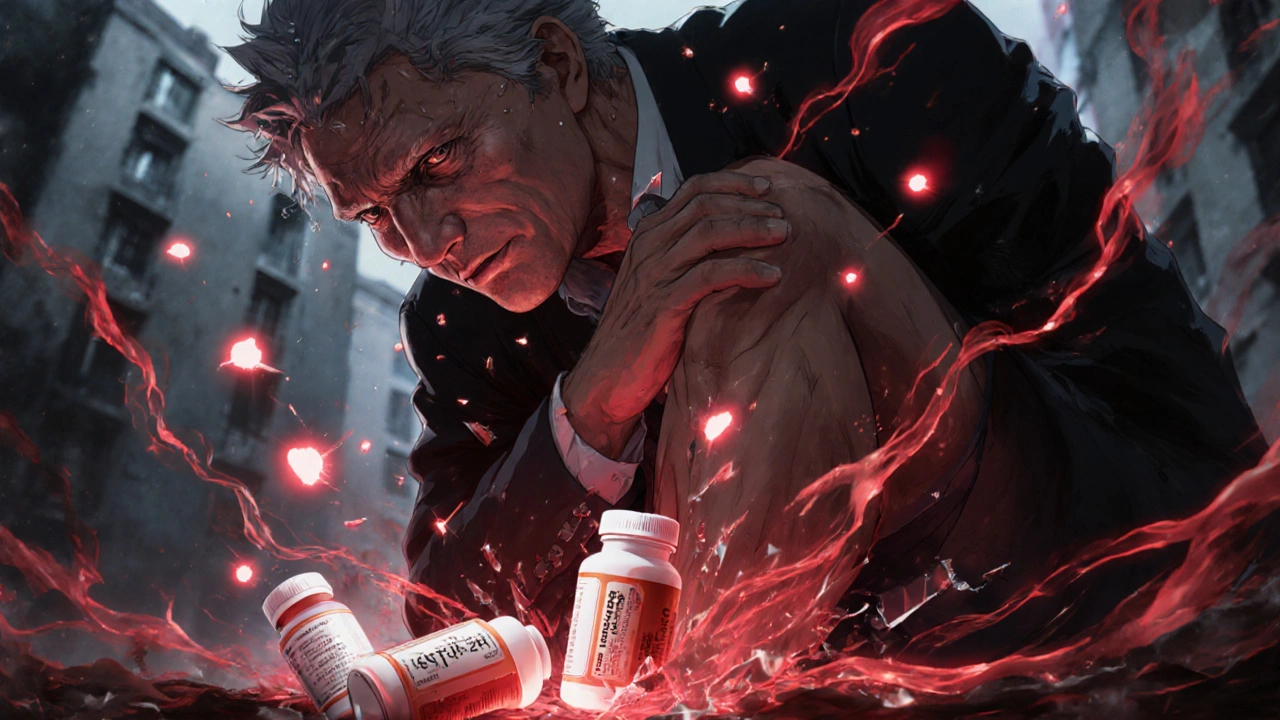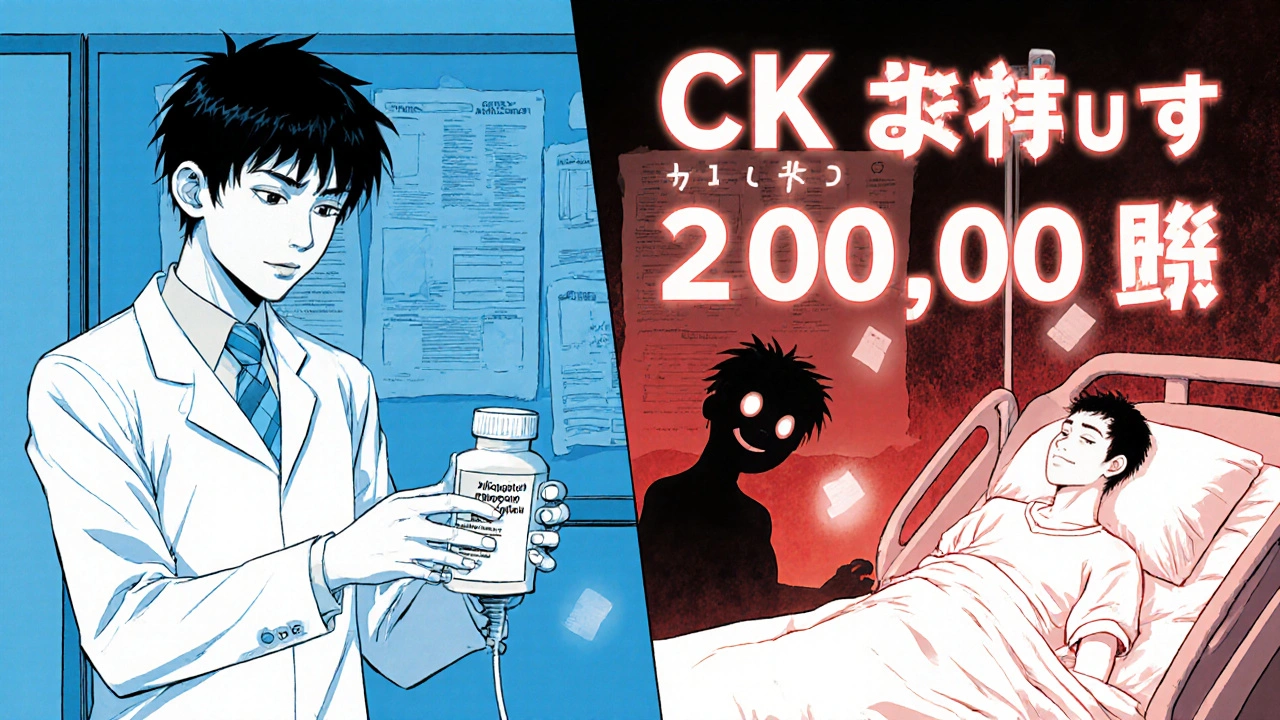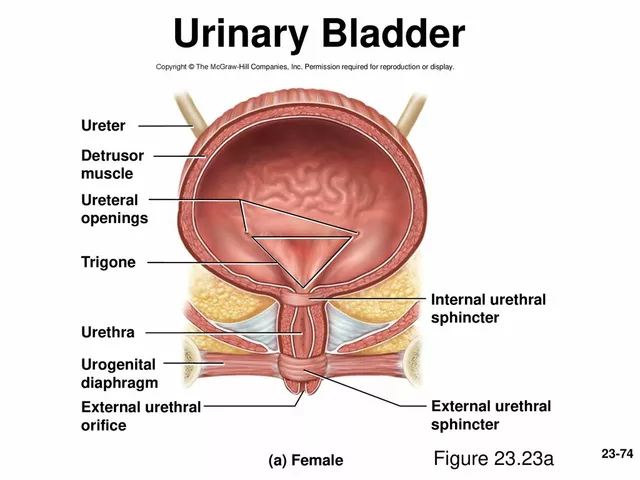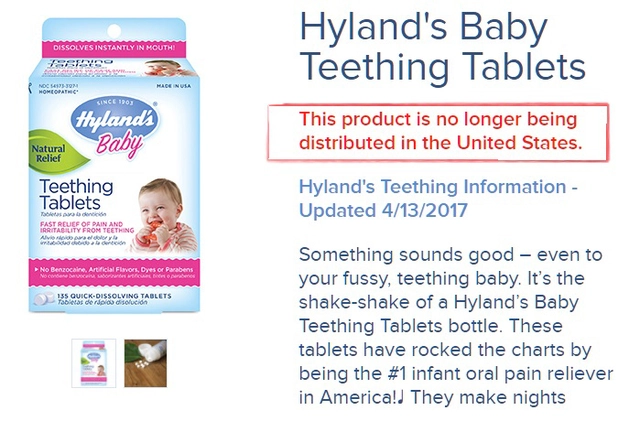
When you’re on a statin to lower your cholesterol, the last thing you need is a simple antibiotic like clarithromycin to send your muscles into crisis. But that’s exactly what can happen when these two drugs meet. The interaction isn’t rare. It’s not theoretical. It’s been documented in emergency rooms, FDA reports, and patient forums - and it’s entirely preventable.
Why Clarithromycin and Statins Don’t Mix
Clarithromycin is a common antibiotic used for sinus infections, bronchitis, and pneumonia. Statins like simvastatin, atorvastatin, and lovastatin are among the most prescribed drugs in the world. Millions take them daily. But when they’re taken together, something dangerous happens behind the scenes.Clarithromycin blocks a liver enzyme called CYP3A4. This enzyme is responsible for breaking down certain statins. When it’s shut down, those statins pile up in your bloodstream - sometimes by 10 or even 20 times their normal levels. That overload turns harmless muscle aches into something far worse: rhabdomyolysis, a condition where muscle tissue breaks down and floods your kidneys with toxic proteins.
It’s not just a theory. Between 2004 and 2013, the FDA recorded 127 cases of rhabdomyolysis linked to clarithromycin and statins. One patient in a 2019 case series had creatine kinase (CK) levels of over 200,000 U/L - normal is under 200. Another reported muscle pain so severe they needed morphine. And it doesn’t take long. Symptoms often appear within 3 days of starting clarithromycin.
Which Statins Are Most Dangerous?
Not all statins are created equal when it comes to this interaction. Your risk depends entirely on how your body processes the drug.- Simvastatin (Zocor) - Highest risk. At 40 mg, levels can spike 12-fold. The FDA says never exceed 20 mg if you’re taking clarithromycin. Many experts say avoid it completely.
- Lovastatin (Mevacor) - Almost as bad. The European Medicines Agency recommends avoiding it entirely with clarithromycin.
- Atorvastatin (Lipitor) - Moderate risk. Levels can rise 4-8 times. The limit is 20 mg daily during clarithromycin treatment.
- Rosuvastatin (Crestor) - Lower risk. Only a 2-3 fold increase. Maximum 20 mg daily is advised.
- Pravastatin (Pravachol) and Fluvastatin (Lescol) - Safest options. They’re broken down by different enzymes. No dose changes needed.
That’s why switching statins isn’t just a suggestion - it’s a life-saving move for some people. If you’re on simvastatin and need antibiotics, your doctor should be thinking about alternatives before writing the prescription.
The Safer Antibiotic: Azithromycin
There’s a simple fix: swap clarithromycin for azithromycin (Zithromax). It works just as well for most infections - strep throat, sinusitis, chest infections - but it doesn’t touch CYP3A4. Zero meaningful interaction with any statin.A 2013 study in the Canadian Medical Association Journal tracked over 300,000 patients. Those on azithromycin and simvastatin had a 4.6 times lower risk of hospitalization for rhabdomyolysis than those on clarithromycin. Another study found azithromycin users had 1.6 times less risk of acute kidney injury - a common complication of muscle breakdown.
One Reddit user, ‘CardioPatient,’ wrote in April 2024: “My doctor switched me to azithromycin when I needed antibiotics while on atorvastatin - no issues this time.” That’s not luck. That’s smart prescribing.
And yet, a 2023 study in JAMA Internal Medicine found that nearly 19% of primary care doctors still prescribe clarithromycin to patients on high-dose simvastatin. That’s over 130,000 dangerous prescriptions every year in the U.S. alone.

What to Do If You’re Already Taking Both
If you’re currently on clarithromycin and a statin, don’t panic - but don’t ignore it either. Here’s what to do right now:- Check your statin. Is it simvastatin or lovastatin? If yes, contact your doctor immediately. Don’t wait for symptoms.
- Watch for symptoms. Muscle pain, tenderness, or weakness - especially if it’s sudden or severe. Dark urine, fever, or fatigue are red flags.
- Get a CK test. If you have symptoms, ask for a creatine kinase blood test. Levels above 5,000 U/L mean serious muscle damage.
- Don’t stop either drug on your own. Stopping statins suddenly can raise your heart risk. Stopping antibiotics early can lead to resistant infections. Talk to your doctor about the safest plan.
The American Heart Association recommends one of three strategies:
- Pause your statin during clarithromycin treatment and for 3-5 days after.
- Switch to azithromycin instead.
- If you must keep both, reduce simvastatin to 10 mg or atorvastatin to 20 mg - and monitor closely.
For people over 75, with kidney problems, or with hypothyroidism, the safest choice is always to stop the statin during antibiotic treatment.
Who’s Most at Risk?
This interaction doesn’t affect everyone equally. Some people are far more vulnerable:- Age 75+ - Older bodies process drugs slower.
- Chronic kidney disease - Your kidneys can’t clear muscle toxins as well.
- Hypothyroidism - Low thyroid function increases muscle sensitivity to statins.
- High-dose statins - Especially simvastatin 40 mg or higher.
- Genetic factors - New research shows people with the CYP3A5*3/*3 gene variant may be 3.2 times more likely to develop muscle toxicity.
Even if you’re young and healthy, don’t assume you’re safe. A 2022 survey found that 68% of statin users didn’t know about drug interactions until they had symptoms. That’s not ignorance - it’s a system failure.

How to Protect Yourself
You can’t control every prescription, but you can take control of your own safety:- Always tell every doctor you’re on a statin. Even if it’s a dentist or dermatologist.
- Keep a list of your meds. Use your phone or a wallet card. The American Heart Association offers free printable ones.
- Ask: “Is there a safer antibiotic?” If you’re prescribed clarithromycin, ask if azithromycin is an option.
- Don’t rely on pharmacy alerts alone. EHR systems have cut dangerous co-prescriptions by 42% since 2015 - but they still miss 1 in 5 cases.
- Report side effects. If you feel unexplained muscle pain, tell your doctor and report it to the FDA MedWatch program.
One user on Drugs.com wrote in June 2023: “Took clarithromycin with 40mg simvastatin - ended up in the ER with CK at 12,500.” That’s not an outlier. It’s a warning.
What’s Changing in 2025?
The science is evolving. In January 2023, the FDA updated clarithromycin’s label to include stronger warnings. In March 2024, the American Heart Association and Infectious Diseases Society of America jointly recommended azithromycin as the preferred macrolide for statin users.Researchers at the University of Toronto are now studying genetic markers to predict who’s most at risk - a step toward truly personalized care. Meanwhile, two new non-systemic antibiotics (AB569 and SPR720) are in clinical trials. They’re designed to treat infections without entering the bloodstream - meaning no liver enzyme interference at all.
But you don’t need to wait for the future. The tools to prevent this interaction are here today.
Bottom Line
Clarithromycin and statins can be a deadly combo - but only if you don’t know about it. The good news? You can avoid it. If you’re on a statin and need an antibiotic, ask your doctor: “Is there a safer option than clarithromycin?”Switching to azithromycin is simple. Stopping your statin for a week is safe for most people. Monitoring your muscles is easy. And doing nothing? That’s the real risk.
Can I take clarithromycin with pravastatin?
Yes, pravastatin is one of the safest statins to take with clarithromycin. It’s broken down by sulfation, not the CYP3A4 enzyme, so clarithromycin doesn’t significantly raise its levels. No dose adjustment is needed. Fluvastatin is also low-risk. If you’re on simvastatin or lovastatin, switch - but if you’re on pravastatin or fluvastatin, you’re likely fine.
How long does clarithromycin stay in my system after I stop taking it?
Clarithromycin itself clears in 3-7 hours, but its active metabolite, 14-OH clarithromycin, sticks around for 7-10 days. That’s why the risk of muscle toxicity lasts long after you finish the antibiotic. Most guidelines recommend waiting 3-5 days after your last dose before restarting your statin - and longer if you’re high-risk.
What should I do if I start feeling muscle pain while on both drugs?
Stop taking both medications and call your doctor immediately. Muscle pain, weakness, or dark urine could mean rhabdomyolysis. Don’t wait. Get a blood test for creatine kinase (CK). If levels are over 5,000 U/L, you need urgent care. Early treatment can prevent kidney failure and death.
Is it safe to take azithromycin with any statin?
Yes. Azithromycin does not inhibit CYP3A4 and has no clinically significant interaction with any statin - including simvastatin, atorvastatin, or rosuvastatin. It’s the preferred antibiotic for statin users who need a macrolide. Many doctors now default to azithromycin for this reason.
Can I take a lower dose of simvastatin with clarithromycin?
The FDA says simvastatin should not exceed 20 mg daily if taken with clarithromycin. But even 20 mg carries risk. Many experts recommend avoiding the combination entirely and switching to azithromycin or a different statin like pravastatin. If you must use both, reduce simvastatin to 10 mg and monitor closely with CK tests. But the safest choice is to avoid the combo altogether.
If you’re on a statin and your doctor prescribes clarithromycin, speak up. Your muscles - and your kidneys - depend on it.




